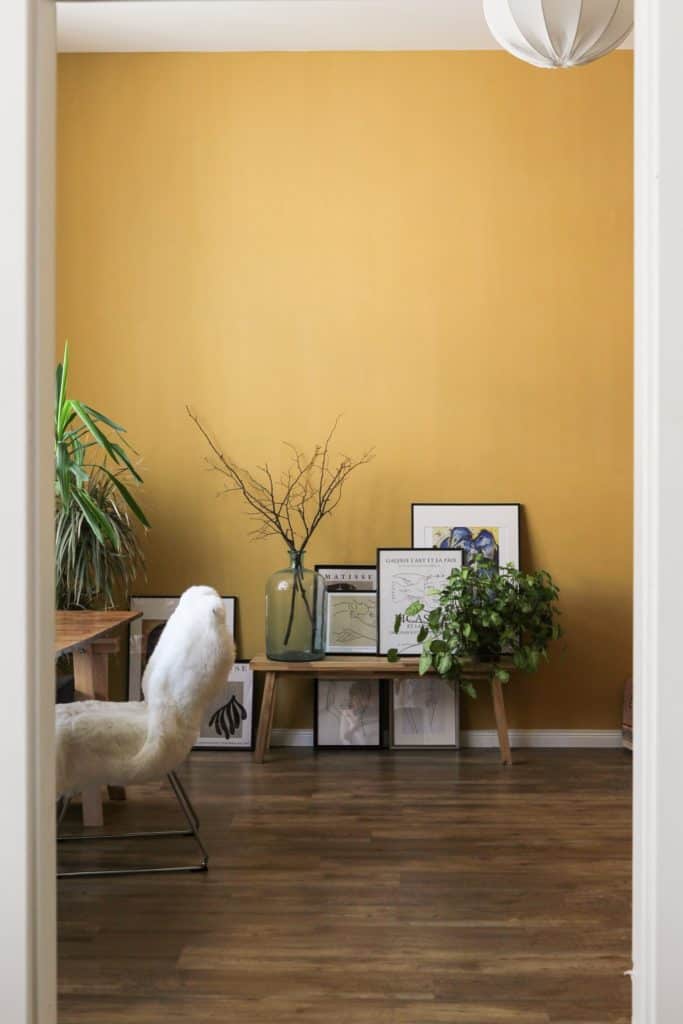What do you think of when you see a bright orange? What do you feel when you see a rich and penetrating blue? Do you feel cold or do you feel more creativity blossoming inside you? We have long been aware of the effect of colours on people. In European Ayurveda we take advantage of this and use colours specifically for therapeutic purposes. With the right choice of colours we can balance, stimulate or soothe our doshas. If you already know your basic Ayurvedic type, we will show you which colours balance your dosha and which you should better avoid. You don't know which bioenergy is dominant in you? Then we recommend our Dosha Test in advance.
The primary colours in European Ayurveda
Colours, their intensity, light and shadow have an enormous effect on body and mind. We perceive both light and colours mainly through the eyes. But in this context, the skin is also an important sensory organ that should not be underestimated.
Furthermore, we know from physics that a prism splits white light into the colours violet, indigo, blue, green, yellow, orange and red - also known as the rainbow colours. Within this spectrum, in European Ayurveda we assign the primary colours blue, red and green to the three bio-energies Vata, Pitta and Kapha.
The Vata Colour Chart

Vata is, so to speak, the queen of our bioenergies and therefore has a special role in our body. This dosha is responsible for the coordination of all movements as well as the flow of our energy and supports our memory. We attribute the elements air and ether to Vata, which results in qualities such as cool, dry and mobile. In Ayurvedic colour theory, we therefore assign Vata the primary colour blue. Since this dosha is most easily unbalanced, we should always pay special attention to this bioenergy.
You are more restless than usual, you often feel cold and the carousel of thoughts in your head turns incessantly? These are all possible signs of a Vata imbalance. Caution: These feelings are intensified by bright colours. You should avoid too intense colours and neon colours, as they overstimulate your mind and can lead to overstimulation. You should also avoid black, as it could inhibit your Vata too much.
Warm, earthy colours like honey yellow and beige as well as pastel shades have a positive effect on your Vata. Green tones such as emerald are particularly calming and balancing: they harmonise the central nervous system and bring your Vata back into balance.
The Pitta Colour Chart
The bioenergy Pitta, on the other hand, is responsible for transformations and transmutations in our body and has a strong influence on our digestion or the digestive fire Agni. So it will come as little surprise to you that this dosha combines the elements of fire and water. This results in attributes such as hot, pungent and penetrating, but also sour or somewhat oily. Pitta also owes the colour red to these predominantly fiery attributes.
If this impulsive dosha is out of balance, you will probably be easily irritable, have frequent heartburn and a strong feeling of heat. In this state you should avoid bright or too intense colours such as yellow or orange, as these only strengthen the imbalance of your pitta. The same applies to deep black.
Instead, use cooling colours to calm your Pitta. Blue tones in particular have a cooling and calming effect on your heated mind. But green tones, which tend more towards blue than yellow, also have this positive effect and can thus restore the harmony of your bioenergies.
The Kapha Colour Chart
Kapha is the foundation of our bioenergies and comes from the elements of water and earth. So which of the main Ayurvedic colours would fit better here than green? After all, this dosha stands for stability and structure, but is also responsible for the moisture in our body. This results in attributes such as heavy, cool or immobile.
When your Kapha is out of balance, you are likely to feel listless, somehow heavy and cold more often. Dark colours can intensify this feeling. They dampen your spirit and diminish the warm light you so desperately need. The same applies to cool colours like white, blue or grey - you should also avoid these.
It is therefore better to go for invigorating and warm colours. Red tones such as purple or coral are best suited to restore the harmony of your kapha. But also bright colours like sunflower yellow, gold or a rich orange have a stimulating effect on this dosha.
Your personal colour check

You can already actively use colours in your environment to keep your bioenergies in balance. Would you like to consider Ayurvedic colour theory in your everyday life? Then answer the following questions in advance:
Colour check in the wardrobe:
- Which colours are particularly present here?
- Why did you choose these colours?
- Do they reflect your current needs?
Colour check in your four walls:
- In which colours did you paint or wallpaper?
- What colours are your floors?
- Which colours are dominant in your interior design?
- Where do you feel particularly comfortable? Are there rooms that you avoid?
Colour check in your workrooms:
- What colours surround your desk?
- Can you look outside somewhere? What do you see there?
- What background did you choose on your computer?
Based on your answers, you will quickly be able to see in which areas you can change your colour. Then give yourself a few weeks to let these changes take effect. Do you feel better, calmer, calmer? Feel free to share your experiences with us.





